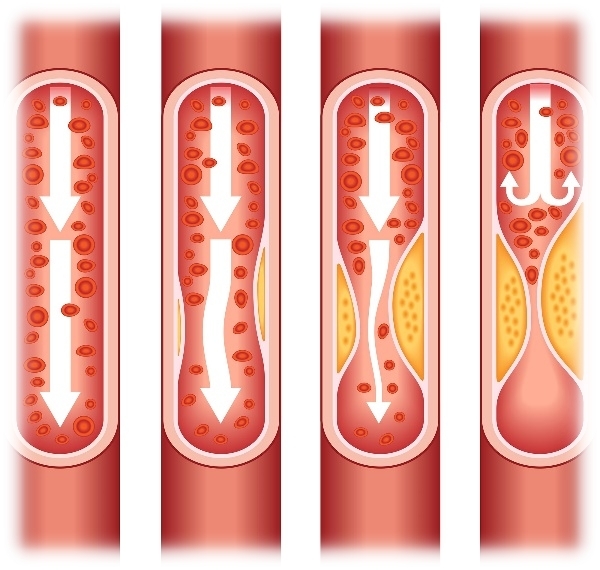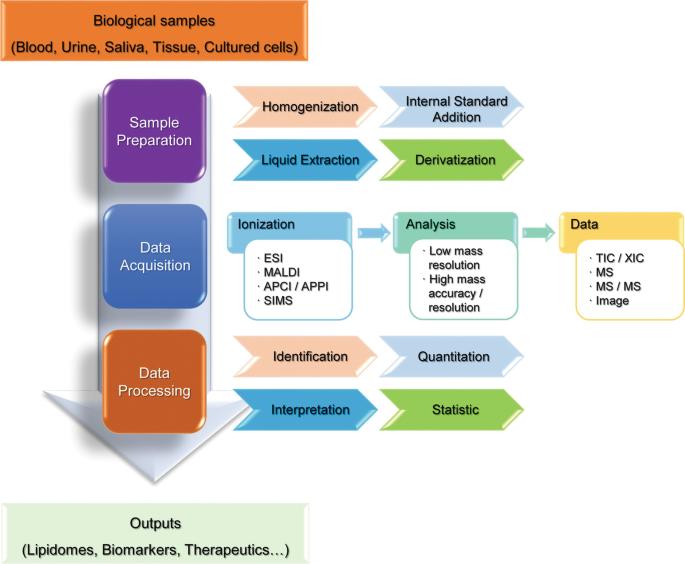Lipidomics for Atherosclerosis Research

Atherosclerosis (AS) is a group of chronic inflammatory diseases of the blood vessels that seriously endanger human health. It is characterized by the accumulation of major low-density lipoprotein (LDL)-derived lipids and apolipoprotein B in the intima of arteries.
Atherosclerosis is characterized by a combination of lesions starting in the intima of the affected arteries, with successive lesions, including localized accumulation of lipids and complex sugars, fibrous tissue proliferation and calcium deposits forming plaques, and progressive degeneration of the middle layer of the artery. Secondary lesions also include intraplaque hemorrhage, plaque rupture, and local thrombosis. Atherosclerotic lesions lead to intracellular and extracellular lipid accumulation.
Lipidomics has been widely used in the study of atherosclerosis. Several lipid risk factors have been identified and novel lipid biomarkers with great diagnostic and prognostic potential continue to be discovered. With extensive experience and state-of-the-art technology, Creative Proteomics provides customizable lipidomics services to identify lipid metabolites in relation to atherosclerosis at scale and with high accuracy, helping our clients gain new insights into the pathophysiology of atherosclerosis and accelerate the drug development process.
Featured services
Technology Platform for Lipidomics Service
Creative Proteomics designs experimental protocols based on customer needs and selects different technical methods to improve assay efficiency and ensure the accuracy and reproducibility of results.
Based on LC-MS/MS technology to simultaneously analyze hundreds of different lipids in biological samples to obtain more information. Through bioinformatics data analysis, we can systematically elucidate the variation at the lipidome level and the regulatory mechanisms in the experimental group compared to the control group from a lipid perspective.
Targeting specific lipid molecules and their metabolites in samples. Based on high-resolution mass spectrometry and isotope internal standard, we use parallel reaction monitoring (PRM) targeted analysis technology, which can realize the specific acquisition of signals of multiple lipid molecules (such as dozens of target lipid molecules) at the same time, and obtain their absolute contents to meet the needs of targeted detection and verification of target lipids. Using Orbitrap mass analyzer and ultra-high resolution mass spectrometry, high quality data can be obtained. Sensitivity up to ppm level and linearity range up to 5-6 orders of magnitude.
 Lipidomics Analysis Process (Wang et al., 2021)
Lipidomics Analysis Process (Wang et al., 2021)
Sample Guidelines
Serum or plasma ≥ 200ul
Avoid repeated freeze-thaw cycles and store at -80°C.
Advantages of Lipidomics Services
- Experienced in sample pre-processing and can handle a wide range of tissue cell samples
- Multi-isotope internal standard calibration, including QC and other multiple quality control systems to make the quantitative more accurate
- Suitable for complex matrices, more metabolite and metabolic network information can be obtained in a single test
- Professional data analysis, able to perform PCA, OPLS-DA, T-test and other analysis on the data
How we work in 7 easy steps

If you have any questions about our lipidomics services for atherosclerosis research, please contact us.
Reference:
- Wang, Y. (2021). Applications of Lipidomics in Tumor Diagnosis and Therapy. In Lipid Metabolism in Tumor Immunity (pp. 25-39). Springer, Singapore.
* Our services can only be used for research purposes and Not for clinical use.



 Lipidomics Analysis Process (Wang et al., 2021)
Lipidomics Analysis Process (Wang et al., 2021)
